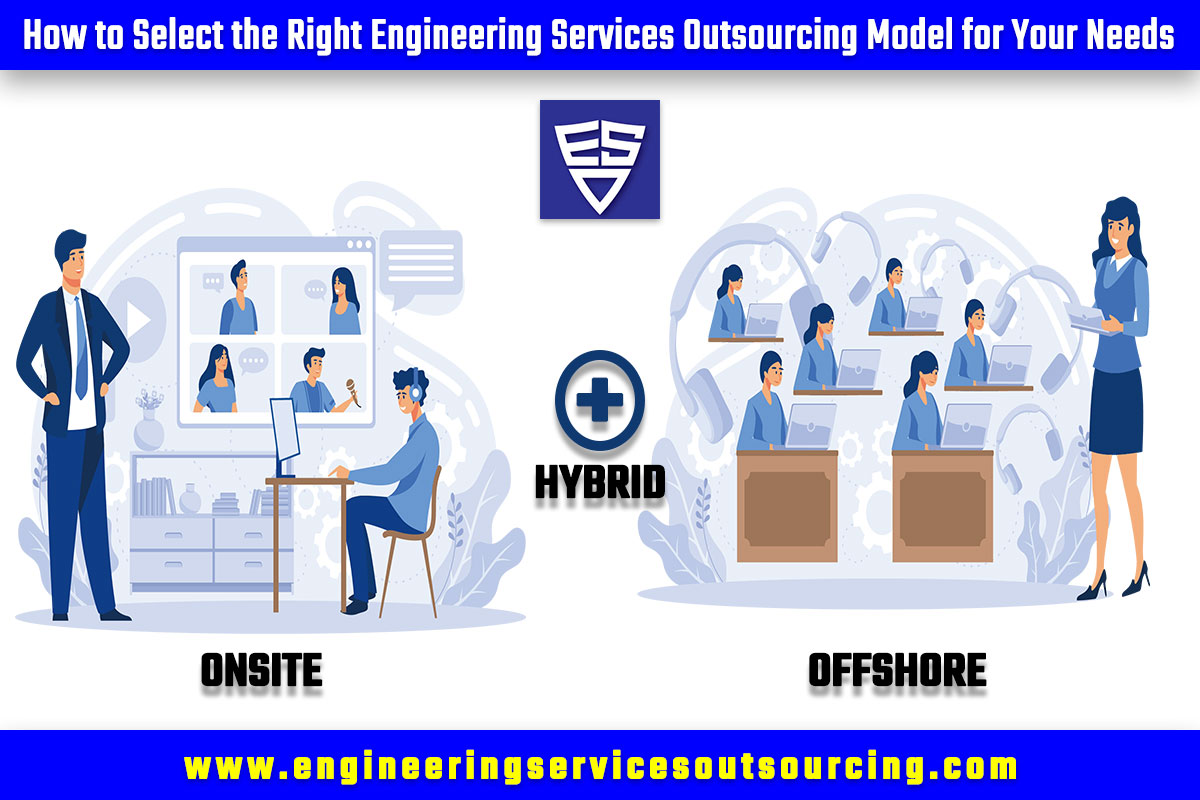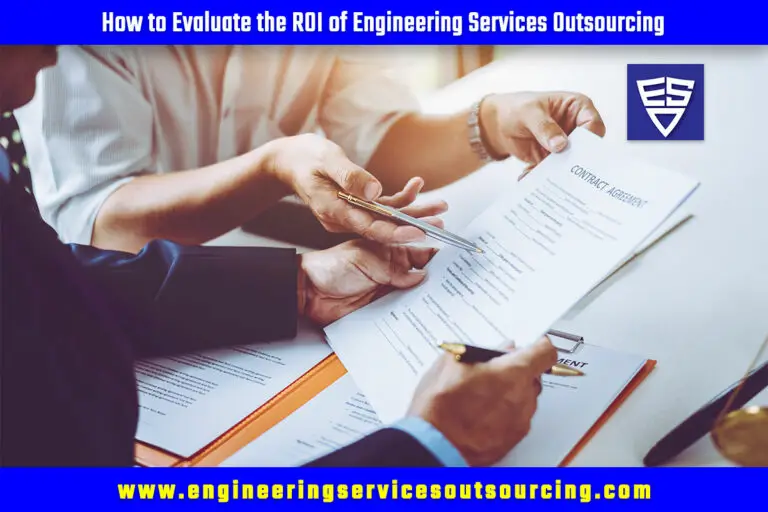
Engineering services outsourcing has become an increasingly popular strategy for businesses looking to leverage external expertise, reduce costs, and accelerate product development. However, selecting the right outsourcing model for your specific needs is crucial to ensure a successful partnership and achieve your desired outcomes. This article will explore key factors to consider when selecting an engineering services outsourcing model.
Table of Contents
01) Define Your Project Requirements and Goals
Before embarking on the outsourcing journey, it is essential to clearly define your project requirements and goals. Determine the scope of work, technical expertise needed, timeline, and budget constraints. Understanding your specific needs will help you evaluate different outsourcing models and choose the one that aligns best with your project objectives.
02) Assess the Level of Control and Flexibility Desired
One of the primary considerations when selecting an outsourcing model is the level of control and flexibility you require. Different models offer varying degrees of control over project management, resource allocation, and decision-making. Evaluate whether you prefer a hands-on approach with direct control or are willing to delegate responsibilities to the outsourcing partner.
a. Dedicated Team Model:
This model provides maximum control and flexibility as you have a dedicated team of professionals working exclusively on your project. You can manage the team directly, set priorities, and allocate resources as needed.
b. Project-based Model:
In this model, you outsource specific projects to a service provider. The service provider assumes responsibility for project execution and delivery, providing a structured approach with predefined deliverables and timelines.
c. Managed Services Model:
With a managed services model, you outsource specific functions or processes to a specialized service provider. This model offers flexibility and scalability as the service provider takes care of managing the outsourced function while you focus on core business activities.
03) Evaluate Cost Considerations
Cost is a critical factor in any outsourcing decision. Assess your budget and evaluate the cost implications of each outsourcing model. Consider factors such as labor costs, infrastructure requirements, and overhead expenses.
a. Offshore Outsourcing:
Offshore outsourcing often offers cost advantages due to lower labor costs in certain regions. However, it is important to balance cost savings with potential challenges such as cultural and language barriers, time zone differences, and communication complexities.
b. Onshore Outsourcing:
Although generally more expensive, onshore outsourcing offers benefits such as proximity, cultural alignment, and easier collaboration. This model may be more suitable for projects requiring close coordination or sensitive information.
c. Hybrid Model:
The hybrid model combines onshore and offshore resources, allowing you to leverage cost advantages while maintaining proximity and control over critical project elements. This model provides a balance between cost efficiency and effective project management.
04) Consider Resource Availability and Expertise
Evaluate the availability of the required resources and expertise in your organization and the outsourcing market. Determine whether you have the necessary in-house capabilities or if you require specialized skills that are not readily available internally.
a. Niche Engineering Services Provider:
If your project requires specific expertise or industry knowledge, partnering with a niche engineering services provider can be beneficial. These providers specialize in specific engineering disciplines and can offer deep domain expertise.
b. Large Engineering Services Provider:
For projects requiring a broad range of engineering services or complex multidisciplinary projects, collaborating with a large engineering services provider can provide access to diverse skill sets and resources.
c. Freelancers and Contractors:
For smaller projects or specific tasks, engaging freelancers or contractors can be a cost-effective option. Freelancers offer flexibility, and you can tap into their specialized skills for short-term assignments.
05) Assess Communication and Cultural Fit
Effective communication and cultural alignment are crucial for successful outsourcing partnerships. Evaluate the service provider’s communication capabilities, proficiency in your language, and their understanding of your business objectives and culture.
a. Language Proficiency:
Ensure thatthe service provider has strong language proficiency in the primary language of communication. Clear and effective communication is essential for avoiding misunderstandings and ensuring smooth collaboration.
b. Cultural Fit:
Assess the cultural compatibility between your organization and the service provider. Consider factors such as work culture, business practices, and communication styles. A strong cultural fit promotes better collaboration and minimizes potential conflicts.
06) Evaluate Service Provider’s Track Record and Reputation
When selecting an engineering services outsourcing model, it is crucial to assess the track record and reputation of potential service providers. Look for references, client testimonials, and case studies to evaluate their past performance and success in similar projects. Consider factors such as quality of deliverables, adherence to timelines, and overall customer satisfaction.
07) Consider Risk Mitigation Strategies
Risk mitigation is an important aspect of selecting an outsourcing model. Identify potential risks associated with each model and evaluate the service provider’s risk mitigation strategies. Look for service providers with robust risk management processes, contingency plans, and established protocols for issue resolution.
08) Evaluate Intellectual Property Protection
If your project involves sensitive intellectual property (IP), it is essential to ensure proper protection. Assess the service provider’s policies and practices regarding IP protection, confidentiality, and data security. Verify if they have measures in place to safeguard your proprietary information and if they comply with industry standards and regulations.
09) Review Contractual Agreements and Legal Considerations
Thoroughly review and negotiate contractual agreements to protect your interests and clearly define project expectations. Consider factors such as pricing structures, project milestones, deliverables, confidentiality clauses, termination provisions, and dispute resolution mechanisms. Seek legal advice if necessary to ensure that the contractual terms are fair, enforceable, and align with your objectives.
10) Plan for Effective Project Governance
Establish a governance structure and project management framework that allows for effective oversight and control. Define roles, responsibilities, and communication channels to facilitate seamless coordination between your organization and the service provider. Regularly review project progress, milestones, and key performance indicators to ensure alignment with project goals.

Conclusion
In conclusion, selecting the right engineering services outsourcing model requires careful consideration of various factors. Define your project requirements and goals, evaluate cost considerations, assess resource availability and expertise, and consider communication and cultural fit. Additionally, review the service provider’s track record, assess risk mitigation strategies, evaluate intellectual property protection measures, and review contractual agreements and legal considerations. By taking a holistic approach and considering these factors, you can select an outsourcing model that best fits your needs and maximizes the potential for a successful partnership.
Related Article:





